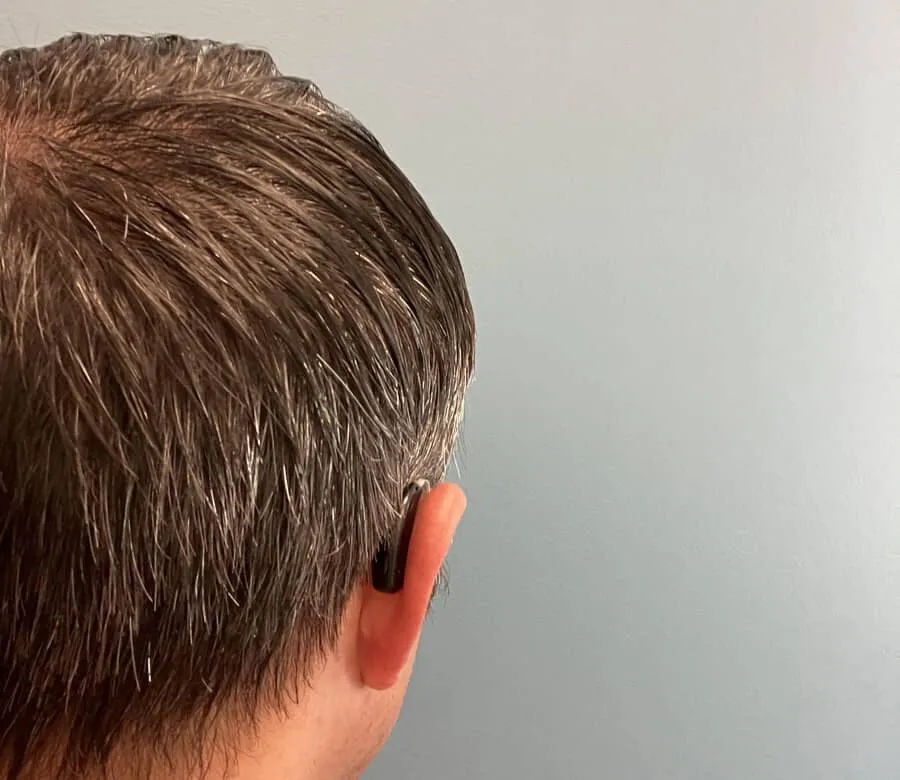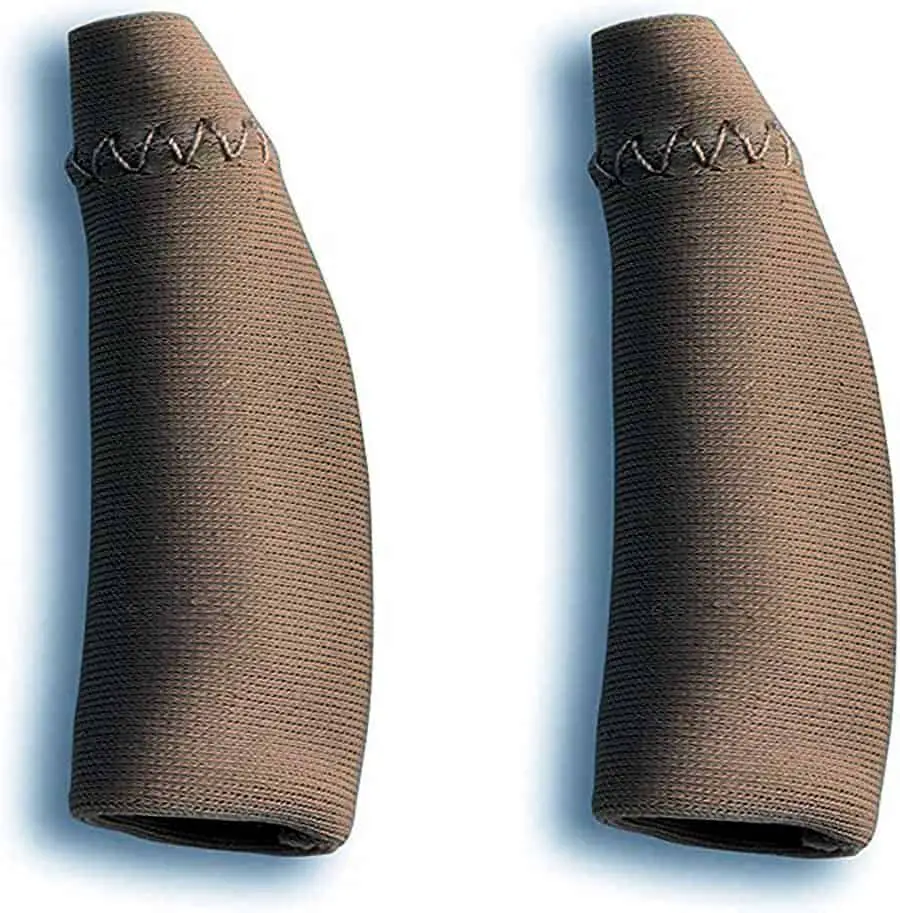Hearing aids have revolutionized the lives of individuals with hearing loss, providing enhanced sound perception and improved communication. Over the length of my career, I have personally seen how the improvements made by each new release have improved the lives and communication of its user. Each new hearing aid product tackles a complaint that hearing aid users have. Today, we talk about wind noise as there never before has been a very satisfactory answer to the problem.
Among the various types of hearing aids available, Receiver in Canal (RIC) hearing aids have gained significant popularity, accounting for over 80% of all dispensed hearing aids in the United States1. RIC hearing aids offer numerous advantages, including discreetness, versatility in treating different levels of hearing loss, and advanced features2. However, one common drawback of RIC hearing aids is wind noise interference as the wind has a clear path to create turbulence over the microphones.
The Impact of Wind Noise
Wind noise is a prevalent challenge affecting devices equipped with microphones, ranging from smartphones to professional audio recording equipment4. The movement of air particles caused by wind disrupts the microphones, resulting in annoying noise that not only hinders hearing but also interferes with speech comprehension5.
I am sure you can relate to trying to talk to someone on a cell phone when it is windy. This issue becomes particularly problematic for individuals wearing RIC hearing aids, as the microphones are positioned behind the ears, making them susceptible to wind noise3. Alternative CIC style of hearing aids does not suffer from this problem as the microphone is naturally shielded by the ear canal.
Understanding the frequency ranges crucial for speech comprehension is essential in addressing wind noise concerns. Phonemes, the fundamental units of human speech, primarily fall between 250 Hz and 8,000 Hz6. Interestingly, the ear canal resonance typically occurs at 2,700 Hz, highlighting the criticality of this frequency range for speech understanding6. Wind speeds play a role in determining the frequency ranges affected by wind noise. Wind speeds below three meters per second impact lower frequencies ranging 0 Hz up to 1,500 Hz, while speeds between three and five meters per second interfere with mid-frequency ranges up to 3,500 Hz. Wind speeds exceeding five meters per second can disrupt all frequencies7.
Oticon Real: The Current Answer to Wind Noise

Fortunately, a new solution exists to mitigate wind noise and preserve speech intelligibility. Oticon, a renowned hearing aid manufacturer, has developed the Oticon Real hearing aids, specifically designed to combat wind noise and handling noise (by handling they mean the sound your hand makes when touching your hearing aids) effectively8. Oticon’s innovative approach involves implementing a wind and handling noise stabilizer that intelligently shuts down the microphones in the frequency ranges where wind noise is detected, particularly at wind speeds as low as two meters per second8. By employing this intelligent noise reduction system, Oticon Real hearing aids successfully reduce wind noise by up to 30 dB below 1,500 Hz and up to 20 dB above 1,500 Hz8.
Testing and Performance
The efficacy of the Oticon Real in wind noise reduction has been demonstrated through rigorous wind tunnel testing. Compared to its predecessor, the Oticon More hearing aids, the Oticon Real showcased superior performance in moderate and stronger wind speeds across all frequency ranges9. In fact, the Oticon Real provided an impressive additional signal-to-noise ratio improvement of 4.3 dB over the Oticon More, ensuring enhanced speech understanding even in windy conditions9. Furthermore, when compared head-to-head with competitors, the Oticon Real excelled in reducing wind noise loudness and improving speech clarity in windy environments10.
See also tips for wearing hearing aids on motorcycles with wind noise.
My Personal Experience
I am just an audiologist with normal hearing and I listen to make sales reps come in to teach and train me on different products. I must say the sales rep with Oticon was not excited about this product. She even downplayed the hearing aids as not being a major/exciting release from Oticon. However, I wore the hearing aids outside to get a sense of how they sound in various situations.
It was a windy day with a storm blowing in and I was quite surprised at how well the volume stayed stable and the turbulence of the wind was only slightly noticeable. This is a big improvement compared to all other hearing aids I have demoed over the last 16 years since I started grad school.

Where to Buy Oticon Real Hearing Aids?
When it comes to purchasing hearing aids, it is highly recommended to visit a local audiologist. Most audiologists operate as independent businesses, offering personalized care and expertise in addressing your hearing needs. While I cannot recommend a specific audiologist as I am not familiar with your area, I can provide you with information about ZipHearing. ZipHearing is an advertiser on this site that can help you buy hearing aids at the best price while connecting you with a local audiologist (click the link to check out current prices).
By choosing ZipHearing, you not only benefit from competitive pricing but also have the advantage of working with a knowledgeable audiologist who will conduct hearing tests and ensure the proper fitting of the device to your unique requirements.
Other Options and Recommendations
Considering the options available to address wind noise, wearing no hearing aids outside is not a recommended approach, as it compromises the ability to perceive sounds and communicate effectively11. Completely-in-canal hearing aids, such as the Oticon Own, offer an alternative solution by positioning the microphones inside the ear canal, providing some protection against wind noise11, but CIC styles also have a major complaint called occlusion. However, for individuals who prefer RIC hearing aids’ comfort and versatility, the Oticon Real emerges as a top choice, offering remarkable wind noise reduction and superior speech understanding in windy conditions.
Is there a simpler and cheaper way to handle wind noise with your current hearing aids?
Hearing Aid Wind Socks: A Simple, Low-Cost Option

For individuals looking for a simple and affordable solution to mitigate wind noise interference in their hearing aids, one option to consider is the use of hearing aid wind socks. These small accessories are designed to cover the microphones of the hearing aids, acting as a wind barrier and reducing the impact of wind noise on the device.
Hearing aid wind socks are relatively inexpensive and readily available in the market. They are typically made of foam or other wind-resistant materials that effectively block the direct contact of wind with the microphones, minimizing the disturbance caused by wind noise. By reducing interference, wind socks can help improve speech clarity and enhance overall listening comfort in windy conditions.
Check out Eargear (hearing aid sock) on Amazon (affiliate link) for around $22.00 a pair.
Downsides of Hearing Aid Wind Socks
While hearing aid wind socks offer a practical and cost-effective solution to address wind noise, they do come with a few downsides. One notable drawback is their aesthetic appeal. Due to their functional design, wind socks may protrude from the hearing aids, making them visually conspicuous. This may not be desirable for individuals who prioritize the discreet appearance of their hearing aids.
Furthermore, wind socks can be a bit more challenging to use compared to other options. They require proper placement and alignment over the microphones to ensure optimal wind protection. Some users may find it inconvenient to constantly attach and remove the wind socks when transitioning between windy and calm environments. Additionally, wind socks may need to be replaced periodically due to wear and tear, which can add to the overall maintenance cost.
Considerations and Personal Preference
When deciding on the best approach to manage wind noise in hearing aids, individuals should consider their priorities, preferences, and specific needs. While hearing aid wind socks offer a simple and affordable solution, it is important to weigh the advantages and disadvantages before making a decision.
Alternative options such as receiver-in-canal (RIC) hearing aids with built-in wind noise reduction features, as the Oticon Real mentioned earlier, provide a more integrated and seamless solution for wind noise management. These advanced technologies are specifically designed to minimize wind interference, offering enhanced speech understanding and improved listening experiences in challenging outdoor environments.
Ultimately, the choice between hearing aid wind socks and other wind noise reduction methods depends on individual preferences, lifestyle, and the desired balance between functionality, aesthetics, and ease of use.
| Oticon Real Hearing Aids | Cheaper Aids with Wind Sock | |
|---|---|---|
| Cost | Higher | Lower |
| Wind Noise Reduction | Excellent | Moderate |
| Speech Clarity | Enhanced | Improved |
| Aesthetic Appeal | Discreet | Less Desirable |
| Ease of Use | Simple and Integrated | Requires Attachment |
| Maintenance | Regular | Periodic Replacement |
| Advanced Features | Yes | Limited |
| Manufacturer Support | Yes | Varied |
| Customization Options | Extensive | Varied |
When considering the choice between purchasing Oticon Real hearing aids and opting for cheaper aids with wind socks, several factors come into play.
Cost: Oticon Real hearing aids as a brand new product are typically priced higher than cheaper alternatives that require wind socks.
Wind Noise Reduction: Oticon Real hearing aids offer excellent wind noise reduction and less distortion of the sound, whereas the effectiveness of wind socks in reducing wind noise is generally moderate.
Speech Clarity: Oticon Real hearing aids provide enhanced speech clarity in windy conditions, while cheaper aids with wind socks may offer improved but comparatively lesser speech clarity. Oticon has a focus on brain hearing which emphasizes reducing distortion.
Aesthetic Appeal: Oticon Real hearing aids are designed to be discreet, while using wind socks may make the hearing aids more visually noticeable.
Ease of Use: Oticon Real hearing aids offer a simple and integrated solution without the need for attaching wind socks. Cheaper aids require the attachment of wind socks when encountering windy situations.
Maintenance: Oticon Real hearing aids require regular maintenance, whereas wind socks may need periodic replacement due to wear and tear.
Advanced Features: Oticon Real hearing aids come with a wide range of advanced features, whereas cheaper aids with wind socks may offer limited functionalities.
Manufacturer Support: Oticon provides comprehensive support for their Real hearing aids, while the level of support for cheaper aids with wind socks can vary depending on the manufacturer.
Customization Options: Oticon Real hearing aids offer extensive customization options, allowing for personalized settings and fitting. Cheaper aids with wind socks may have limited customization options.
Ultimately, the choice between purchasing Oticon Real hearing aids or using cheaper aids with wind socks depends on individual preferences, budget constraints, and the importance placed on factors such as wind noise reduction, speech clarity, aesthetics, and ease of use.
Conclusion
In conclusion, wind noise can significantly impact the wearer’s ability to hear effectively and enjoy outdoor activities. With the advent of Oticon Real hearing aids, individuals can now experience the benefits of RIC hearing aids without the nuisance of wind noise interference. The intelligent wind and handling noise stabilizer, combined with the impressive noise reduction capabilities, make the Oticon Real one of the best hearing aids for minimizing the negative effects of wind noise8. By choosing the Oticon Real, individuals can enjoy improved speech comprehension and enhanced communication even in windy environments.
Footnotes
- Hearing Industries Association. (2019). Annual sales survey 2018.
- American Speech-Language-Hearing Association. (2021). Receiver-in-the-Canal (RIC) Hearing Aids.
- Laplante-Lévesque, A., Nielsen, C., & Jensen, L. D. (2014). Acoustic factors predicting hearing-aid adoption. Trends in amplification, 18(3), 127-138.
- Killion, M. C. (1997). Microphone wind noise in hearing aids. The Hearing Journal, 50(11), 34-42.
- Liu, C. H., Chu, S. A., Lee, W. T., & Pan, C. A. (2013). Wind noise reduction for hearing aids. IEEE transactions on biomedical engineering, 60(12), 3502-3509.
- Grange, J. A. (2000). Speech sounds and the resonance of the ear canal. The Journal of the Acoustical Society of America, 108(3), 1187-1192.
- Killion, M. C., & Mueller, H. G. (2010). Wind noise and its effect on microphone directionality: Understanding the evidence. Trends in amplification, 14(3), 127-143.
- Oticon. (n.d.). Oticon Real
- Vassermann, M. (2022). Wind tunnel testing of Oticon Real hearing aids: Handling noise, wind noise and speech understanding. Oticon Whitepaper.
- Stohl, N., Laugesen, S., & Høydal, E. (2021). Performance in wind noise for four modern hearing aids. Oticon Whitepaper.
- American Academy of Audiology. (n.d.). Wind Noise and Hearing Aids.

